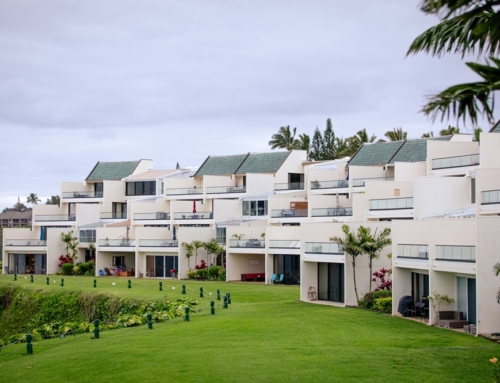Homeownership might feel out of reach, but you may be interested to learn that you can still find properties for around $100,000 across the country.
Nationally, home prices have risen 4.9 percent year-over-year, according to the latest S&P/Case-Shiller Home Price Index. While home values are predicted to continue to rise in the months ahead—albeit more slowly than they did in 2014—there are still deals to be had.
Whether you’re looking for an investment property or a place to call home, here’s an overview of what you can expect if you are looking to spend around $100,000 in six different metro areas.
Anchorage, Alaska
Alaska might not be the first spot on your list of desired locales, but many homebuyers flock here to enjoy its scenic beauty and the outdoor activities that come with it.
“Alaska is very highly sought after for military placement, especially to retire,” says Michael Droege, owner and general manager at Century 21 North Homes Realty in Anchorage.
Overall, Alaska home values have gone up 8 percent over the past year. According to Droege, Anchorage wasn’t as heavily affected by the recession as other areas of the country. Anchorage faced a 16 percent loss in value, whereas in the lower 48 states there was as much as a 50 percent drop.
“Today, we have made all that ground back up,” Droege says.
The average price of a home in Anchorage is around $360,000. The market has done well, Droege says, partly due to the stability of the government-driven economy, and it will be a competitive market for anyone looking to buy at around $100,000.
“At that price range, you’d need to buy a small condominium or head to markets north of Anchorage and be prepared for an hour drive,” Droege says.
The price increases are mostly due to a lack of inventory, Droege explains. The state of Alaska is the largest in the United States, but the Anchorage bowl area is running out of affordable, developable land. While on average in the United States, land is usually 20 percent of the overall home value, in Alaska, the land component comprises about 40 percent of the overall cost of a home.
Droege expects to see a 3 percent to 5 percent sales increase in Anchorage over the next year. He recommends looking at the Palmer or Wasilla markets for more affordable housing.
Atlanta, Georgia
Atlanta was hit hard by the recession but has moved into recovery mode, according to Todd Emerson, president of the Atlanta Board of Realtors. The market has cycled through the majority of the distressed inventory, and there are far fewer foreclosed homes available than there were 18 months ago, Emerson says.
“[Distressed homes] are now less than 5 percent, where it used to be 30 percent, because the investors really gobbled a lot of that up,” Emerson explains. As a result, the Atlanta market is less affordable than it was two years ago. Emerson says he’s even seen pre-recession prices in desirable areas, such as downtown. According to Zillow, the median sale price of homes in Atlanta is $226,500.
If you’re shopping for a home priced at around $100,000, you’ll most likely have to look as much as 45 minutes outside the city, in the suburbs. Emerson says this is a challenge for Millennials who want to work and buy a home downtown but who can’t find homes that they can afford.
“If they are willing to make a commute or sacrifice on the square footage, there are certainly plenty of opportunities,” Emerson says.
Dallas, Texas
Like other parts of the nation, the Dallas market is suffering from an acute lack of inventory. Dallas-area home prices are now more 12 percent higher than they were before the recession.
“The problem is that the buyer demand is outpacing the listings by leaps and bounds,” says Bill Head, director of communications for the MetroTex Association of Realtors.
The demand for homes is extremely high because of the influx of people moving into the area. Dallas’s economy remained relatively stable throughout the recession and has since attracted businesses and families looking for lower costs of living, Head says.
“A lot of municipalities have some flexibility to help companies relocate,” Head says. Over the next two years, for example, Toyota will relocate its headquarters—and around 4,000 employees—from California to Plano, Texas (a city near Dallas).
While job prospects are good, new homebuyers are going to need patience to find a home in Dallas, Head says. The competition is intense, especially for homes with new amenities that are move-in ready.
“When one of those homes goes on the market, it may already have several offers within the first few days, often higher than the listing price,” Head explains. The median sale price of homes in Dallas is $238,244, according to Zillow. Buyers in a lower price range may need to look outside the city.
“For a single family home for $100,000, I think it would have to be suburbs. There could be some condo home opportunities in the city possibly, but not city-center,” Head says.
Fresno, California
California has seen a price explosion over the last five years, and the median home price is just shy of $400,000. However, there are still areas of the state, such as Fresno, where you may be able to buy a home for a little more than $100,000.
“We are very affordable compared to Los Angeles, and we’re home to lots of recent college graduates or first-time buyers,” says Elizabeth Kuchinski, a seasoned Fresno realtor with Century 21 C. Watson.
Affordable for California may be a little different than the rest of the country. You can get a home in Fresno for around $180,000, Kuchinski says. She adds that the economy is improving, and there’s a good surplus of homes available. The short sales and foreclosures have almost disappeared, but the interest rates are still at record lows.
“It’s a great time to buy,” Kuchinski says, but you may have to look outside the town center if you’re on a strict budget. If you’re fixed on California, however, Fresno may be one of the most affordable regions for housing.
Kailua-Kona, Hawaii
Hawaii is not your typical market but it still sees a cyclical pattern, according to Kevin McCabe of Re/Max Brokers in Kailua-Kona.
“It goes up and down, but right now we are in a recovery period, and prices have been increasing over the past few years,” McCabe says. The median sale price has increased about 20 percent since 2012, and home values have gone up 9 percent in the past year. Most buyers are mainland retirees who have saved up for a change of pace.
“We don’t really have an industry here that’s attracting people, so buyers are usually people over 60 who have already made their money,” McCabe says. Inventory is also a unique challenge for the Kona market because there’s almost no new construction.
“People who move here often love it for the first three or four years, and then they want to go back to a normal life or where there’s family,” McCabe explains, “so we’re just reselling the whole thing.” The lack of advanced medical care is often a challenge for retirees, he says.
In this market, $100,000 likely won’t get you much, especially in Kona, which is where most of the resorts and tourist attractions are located. The median price of homes sold in Hawaii is $452,000.
“It would be a very small house and on the other side of the island,” McCabe says.
New York, New York
According to veteran real estate agent Dawn Carpenter, the New York City market has come back vibrantly since the recession. The median price of homes that sold in New York City is $487,850, up from $463,000 in 2012, according to Zillow.
“What was a buyer’s market a year or two ago has changed to a seller’s market,” Carpenter says. Realtors are also seeing a lot of international buyers come in to the area. New York City home values have gone up 10 percent over the past year, and Zillow predicts they will rise 3.4 percent within the next year.
“We’re a destination spot,” Carpenter says, “Who wouldn’t want to live in New York City?”
The good news is that buyers can still find an affordable one-bedroom condo in the $100,000 range in the outer boroughs, such as Queens or Brooklyn.
“It’s going to be a small condo, but you can still jump on a train and be in Manhattan in 15 minutes,” Carpenter says. For a larger place, such as a two-bedroom condo, buyers will need to look farther out, such as to Staten Island.
“Staten Island has really taken off—we’ve got a new brewery going in, a Ferris wheel, and restaurants,” Carpenter says. For buyers looking at shore properties, Superstorm Sandy has made life more difficult. Buyers have experienced issues with insurance fees and flood coverage, Carpenter explains. Be prepared for higher costs on coastal properties.
Depending on where you want to buy, you may be able to find your new home for less than you think. Of course, make sure you know into what kind of house you are stepping into. If you’re considering a property priced well below average, make sure you understand why. Some homes are inexpensive because they’re located in less-than-desirable areas—something you can’t change—or because they’re in need of major and expensive repairs that will become your responsibility.
Ilyce Glink is the author of over a dozen books, including the bestselling 100 Questions Every First-Time Home Buyer Should Ask and Buy, Close, Move In! Her nationally syndicated column, “Real Estate Matters,” appears in newspapers from coast-to-coast, and her Expert Real Estate Tips YouTube channel has nearly 4 million views. She is the managing editor of the Equifax Finance Blog, publisher of ThinkGlink.com, and owner of digital communications agency Think Glink Media. In addition to her WSB radio show and WGN radio contributions, she is also a frequent guest on National Public Radio. Ilyce is a frequent contributor to Yahoo and CBS News.






